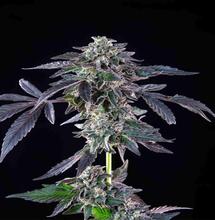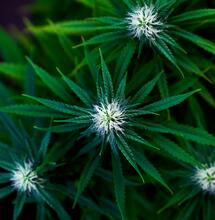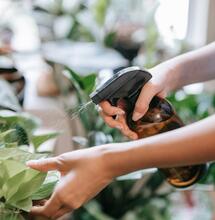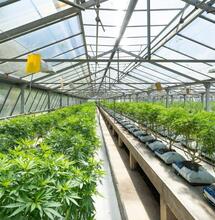Tips for Outdoor Growing

When is the perfect time of year to germinate your cannabis seeds for outside growing so that everything runs smoothly? Well, this depends on many things including what medium you’re growing in, and your set-up. It is possible to grow the perfect crop at any point of the year. Here are some tips to get the most out of your plants regardless of the time of year.
If you want regular-sized plants (2m)
When spring comes it’s time to start germinating your cannabis seeds if you're growing outside. This is the most significant crop of the year as it’s where you will get the most yield of the whole year. Some veteran growers swear by planting their seeds in time for the first full moon of March.
The idea is that while your seeds are germinating they’ll also receive some light at night and won’t stretch too much in the early stages of life. However, this is more applicable if you live somewhere with a warm climate otherwise it is still far too cold. In this case, your plants will take much longer to grow and will be stressed out by cold or wind, which produces weaker plants that are more liable to disease, pest infestations and fungi.
The best thing here is to wait another month or two as a germinated seed in a decent climate from April onwards will produce bigger healthier plants.
Caring for cannabis plants for such a long time is quite labour-intensive, you need to be constantly monitoring for pest infestations, fungi, nutrition, transplants, pruning… The whole growth cycle can take about six months of hard work. If you want a decent end product and yield you will need the following.
Fertiliser
for growth and flowering. You can use organic fertiliser, guano for growth, a bas and a booster for flowering. this should be more than adequate to get you an abundant and flavorful crop
If you prefer to grow using non-organic nutrients then it is best to buy a complete range from a specific brand that’ll supply your plants with all the nutrition they need to get the best results. The rule of thumb is that non-organic products can reduce flavour but increase yield, whereas in contrast natural products are often thought to intensify the flavour but produce a lower yield.
Insecticides
These are essential to keep white flies, mites or thrips at bay. Preventive insecticides are often thought to be best to avoid any issues from starting. Again there are organic and non-organic insecticides available but always, make sure that whatever you choose is suitable for use on plants that are intended for human consumption and that cause as little damage to the environment as possible.
If you’re aiming for smaller plants (1m)
If you want small to medium-sized plants that are both compact and strong, then it's best to wait till around the middle of March (April in colder climates) to germinate your seeds. This means that your plants will have time for some growth before the light cycle begins to change and they’ll grow with maximum sunlight, making for robust, compact specimens. Smaller plants will take about three and a half months to grow making this size plant much easier for beginner growers.
For gigantic plants (3m)
To get these kinds of plants you’ll need to grow plants with a decent size so that they can grow long branches with buds so thick they will need holding up with an SCRoG mesh so they don’t fall over.
If you want to grow a massive plant before June then it needs at least six months so that it has plenty of time to Flower which should take another three months. You will also see much better results by playing straight into the ground rather than into pots.
As you will need to grow the plant for so long you’ll need to use a greenhouse. By using a greenhouse, your plants will be able to shelter from the cold during the winter whilst still receiving enough light to grow adequately. You’ll need to germinate your seeds in December but in an inside environment so that they don’t die off at the start and they can thrive in a nice warm environment.
Once your plant has germinated and it’s a few centimeters tall you can move it to the greenhouse. You’ll need to install a grow light above the plant so that it still has enough light to grow during the winter.
Around February, you will need to place four stakes around your plant in a 1mx1m formation. Place the plant in the middle, and then place a SCRoG mesh over it to separate the branches and keep the canopy as wide as possible. Once March/April arrives take the light away so that the plant can get used to natural light. Once you notice the good weather becoming more stable you can remove the greenhouse and let your plant adjust to the open air.
Once June/July arrives, your plant will be pretty ginormous. You’ll need to keep a close watch for infestations and fungi due to size. It’ll need a lot of nutrients due to how long it has to grow and the amount of bud it needs to sustain plus adequate water.
Indoors vs Outdoors?
Growing outdoors means more space to work with, surplus sunshine, rainwater and unlimited ventilation.
However, it also has its own set of challenges. Plants are more vulnerable to insects, predators, excessive heat, and cold extremes of weather.
Growing indoors however offers your plants more protection, and lets you stay in complete control of your growing environment where you are free to change temperature and humidity settings at your will. Your growing efforts will also be kept more discreet if privacy is a concern for you.
However, there are still cons for indoor growers such as having less space, less potential for massive yields, and the layout cost for equipment and power.
More From Soft Secrets
When to Harvest Outdoor Plants









